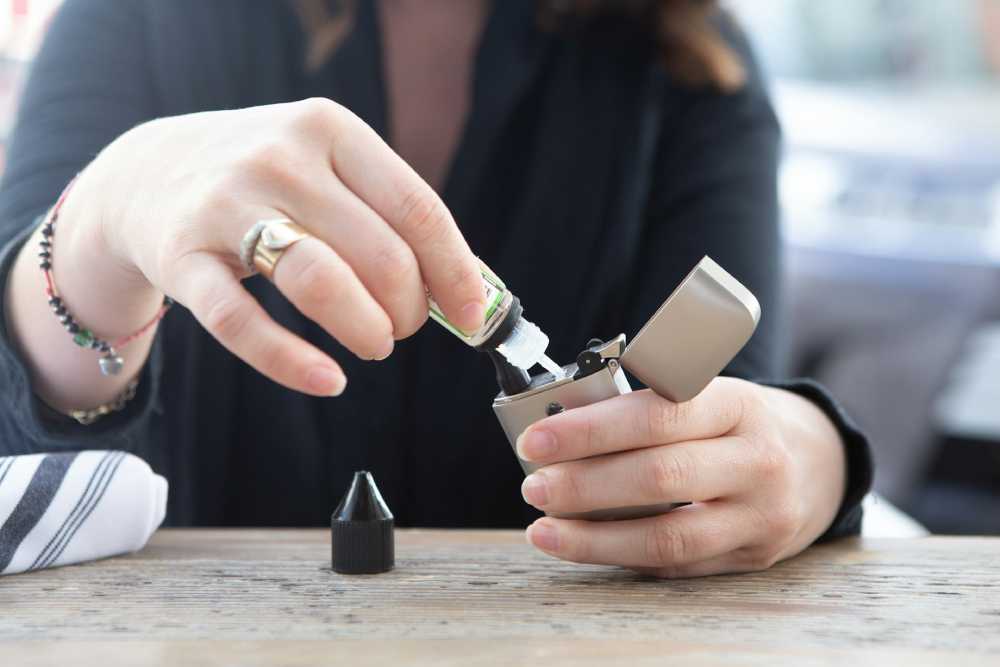The Health Impacts of Secondhand Vape Exposure
When we think of secondhand smoke, our minds often revert to images of smoky rooms filled with the odors of burnt tobacco.
However, in today’s society, a new player has entered the scene – secondhand vape. This invisible byproduct of e-cigarettes, also known as aerosol, has stirred many questions about its safety and health implications.
Defining Secondhand Vape Exposure
Understanding secondhand vape begins by recognizing how it differs from traditional tobacco smoke. Whereas the burning of tobacco produces smoke, vaping emits an aerosol created when liquid is heated within e-cigarettes.
As vaping grows in popularity, frequented environments, from coffee shops to homes, are becoming stages for exposure to these emissions. Contemporary conversations about public health now often reference the question of, “is secondhand smoke from a vape harmful?”. This query highlights the growing concerns as the aroma of diverse flavors of vape products linger in shared air spaces.
Health Risks Associated with Secondhand Vape
The constituents of secondhand vape are diverse, fluctuating based on the device, liquid, and user behavior. Many aerosols contain nicotine, particles, and a cocktail of chemicals with documented respiratory irritants.
While the direct user ingests the primary emissions, bystanders are subject to residual substances capable of provoking immediate health effects such as throat irritation, coughing, or worsening asthma symptoms.
Furthermore, unanswered questions about the long-term consequences of repeated exposure to these chemicals are at the forefront of public health discussions, prompting a consensus on the necessity for preventive measures and tighter control protocols.
Vulnerable Populations and Secondhand Vape
Certain groups are at increased risk regarding pollutant exposure, and secondhand vaping is no exception.
Particularly concerning is its impression on children and adolescents, whose developing bodies could suffer from nicotine exposure and other harmful elements in vape aerosol. Pregnant women are another high-risk category, as the ingestion of nicotine through secondhand vape could potentially affect fetal development.
Additionally, individuals with preexisting respiratory or cardiovascular conditions are advised to remain vigilant as they may experience exacerbated symptoms when exposed to secondhand aerosols from vapes.
Comparing Secondhand Vape to Cigarette Smoke
The comparison between secondhand vape and cigarette smoke is complex due to their differing toxicological profiles. Vapors from e-cigarettes generally contain fewer toxic substances, leading some to assume that they represent a safer alternative mistakenly.
However, public health professionals caution against downplaying the potential dangers of secondhand vape. Highlighting the lack of comprehensive data on the long-term health effects of vaping, there is an emphasis on the continuous need to protect all individuals from involuntary exposure to airborne toxins.
Regulatory Perspectives on Indoor Vaping
Regulations on indoor vaping remain a patchwork of global standards, reflecting varying degrees of understanding and concern about the potential health impacts. Some regions have adopted comprehensive bans similar to those for cigarette smoking, while others maintain less restrictive positions.
This discrepancy in regulations often leads to public uncertainty and debate. Nonetheless, the trend is increasingly moving towards inclusivity of vaping under smoke-free policies, driven by accumulating evidence and public health advocacy efforts.
Ventilation and the Spread of Vape Aerosol
One key factor influencing the distribution of secondhand vapes indoors is ventilation. Effective systems may reduce the accumulation of aerosol particles, yet the degree to which these particles can be removed varies significantly.
Public spaces may need to evaluate and potentially upgrade their ventilation capabilities to ensure a safer environment, particularly in areas where vaping is common. Innovative air filtration technologies could prove instrumental in diminishing the presence of unwanted vape byproducts in shared air.
The Debate Over Vape Flavors and Aromas
The extensive range of flavors available for vape products drives their appeal, especially among younger demographics. This allure has prompted scrutiny over the role these flavors play in enticing non-users and normalization of vaping.
With the pull of exotic flavors such as mango or crème brûlée, the vaping industry faces potential regulatory adjustments aimed at lessening these products’ attraction to minors and non-smokers, who may be indirectly affected by their pervasive aromas.
Educating the Public on Vape Etiquette and Safety
In the evolving landscape of vape culture, public education remains paramount. Vapers can exhibit mindfulness by avoiding using their devices around non-users, especially in enclosed spaces or in proximity to the aforementioned vulnerable groups.
Non-vapers, on their part, should feel empowered to advocate for their right to clean air in public arenas. Resources for cultivating public awareness about safe vaping practices are imperative in fostering mutual respect and health consciousness.
Steps to Minimize Exposure to Secondhand Vape
Understanding that the full spectrum of risks associated with secondhand vape isn’t entirely deciphered, it becomes prudent to adopt strategies to minimize contact.
For individuals seeking to limit their exposure, practical measures such as choosing vape-free environments and advocating for clear indoor air policies contribute to communal health.
Technological tools may offer additional assistance, with some devices capable of monitoring and controlling air quality. As research advances, so should our efforts to ensure that the air we breathe is free of unnecessary pollutants.

